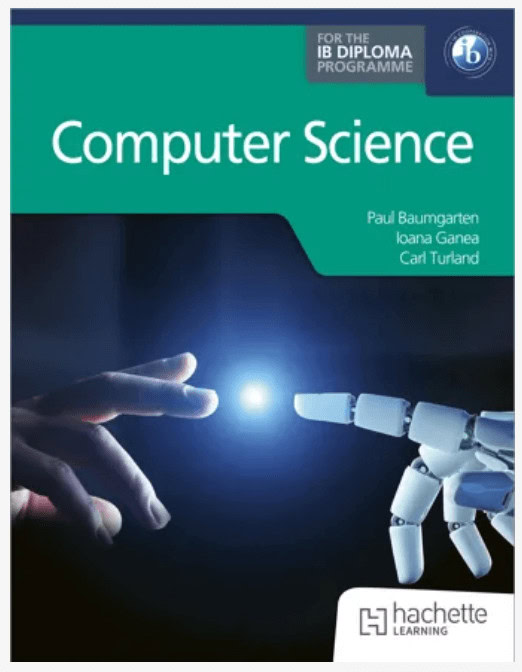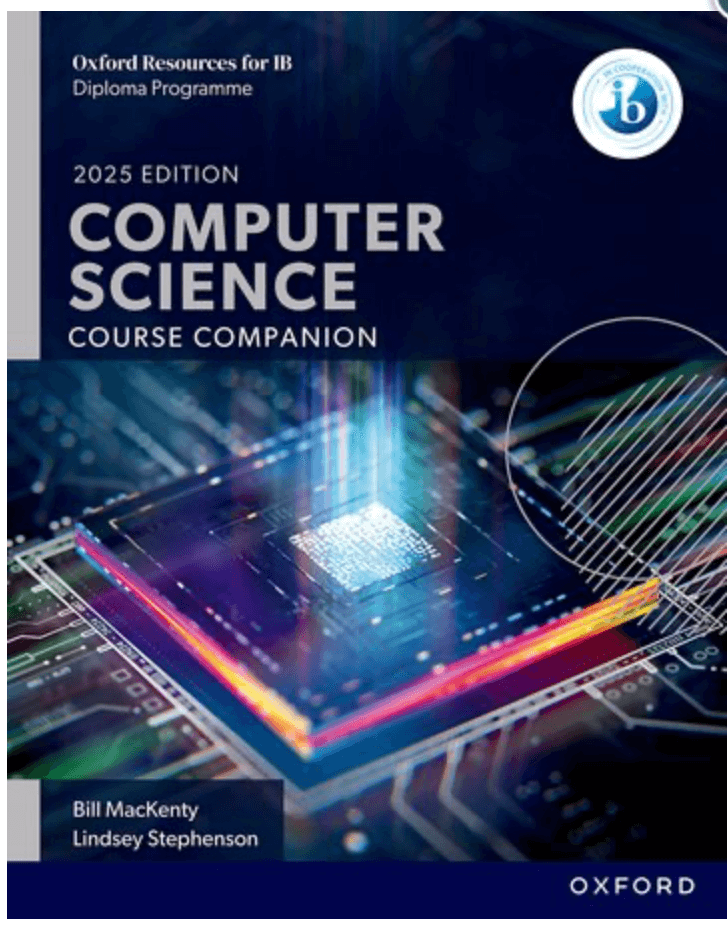
- Java and Python The content has been designed to support both Java and Python as programming languages, allowing candidates to choose either language for their studies.
- No Options Options are no longer available, and the case study is covered by both SL and HL students as part of paper 1 external assessment.
- Databases, Object-Oriented Programming and case study for all Databases unit (part of option A before) and Object-Oriented Programming (option D) are now to be studied at both SL and HL level. The case study is now introduced to SL students as well. This allows all candidates to explore new trends, analyse emerging technologies, and deepen their understanding of the subject through the case study.
- a single HL only Unit The “Abstract data types” topic is the only unit exclusive to HL students.
- New IA structure and Criteria The Internal assessment has a new structure, and 5 more hours are allocated to it.
To find out more about the details of the syllabus changes, download our comparison spreadsheet.
Alongside the release of the new curriculum, IB-approved textbooks have also been published. Both Hachette Learning and Oxford publications are offering an IB approved textbook. The new curriculum supports concept-based learning, and it combines theoretical and abstract concepts with practical skills to aid the development of algorithmic thinking skills and the applications of theory in solving real-world problems. The syllabus is split into two themes: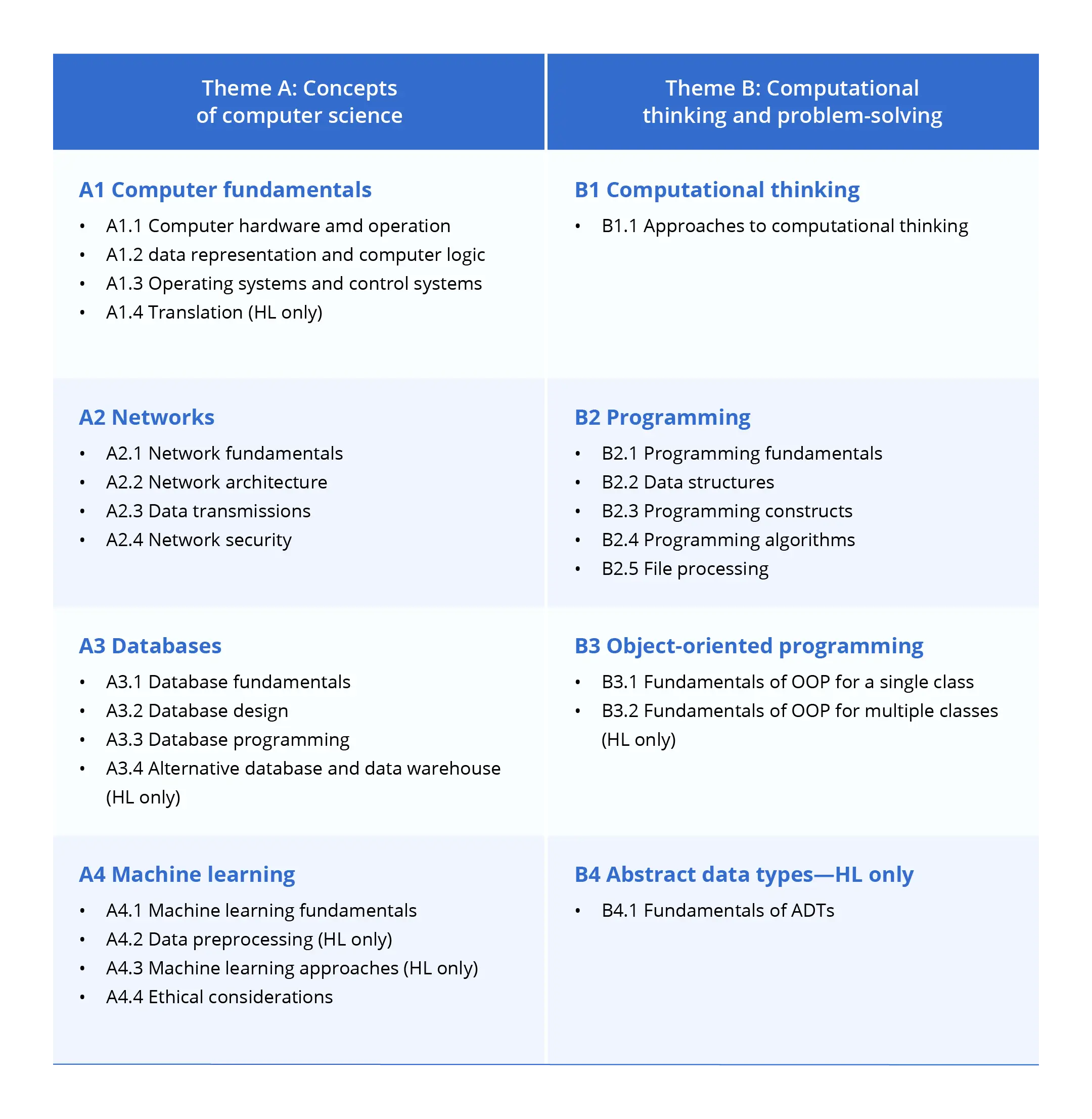 The new syllabus introduces modern topics such as machine learning. While the content covered at SL is relatively basic, the HL curriculum delves into more advanced techniques, enabling students to explore the topic in greater depth.
The new syllabus introduces modern topics such as machine learning. While the content covered at SL is relatively basic, the HL curriculum delves into more advanced techniques, enabling students to explore the topic in greater depth.
To find out more about the details of the syllabus changes, download our comparison spreadsheet.
To download the full First Teaching 2025 Guide Click this Image (IB login required)External Assessment
The external assessment has also undergone a revision, though its core structure remains largely unchanged. With the removal of the options, the assessment has been streamlined into two papers: Paper 1 and Paper 2.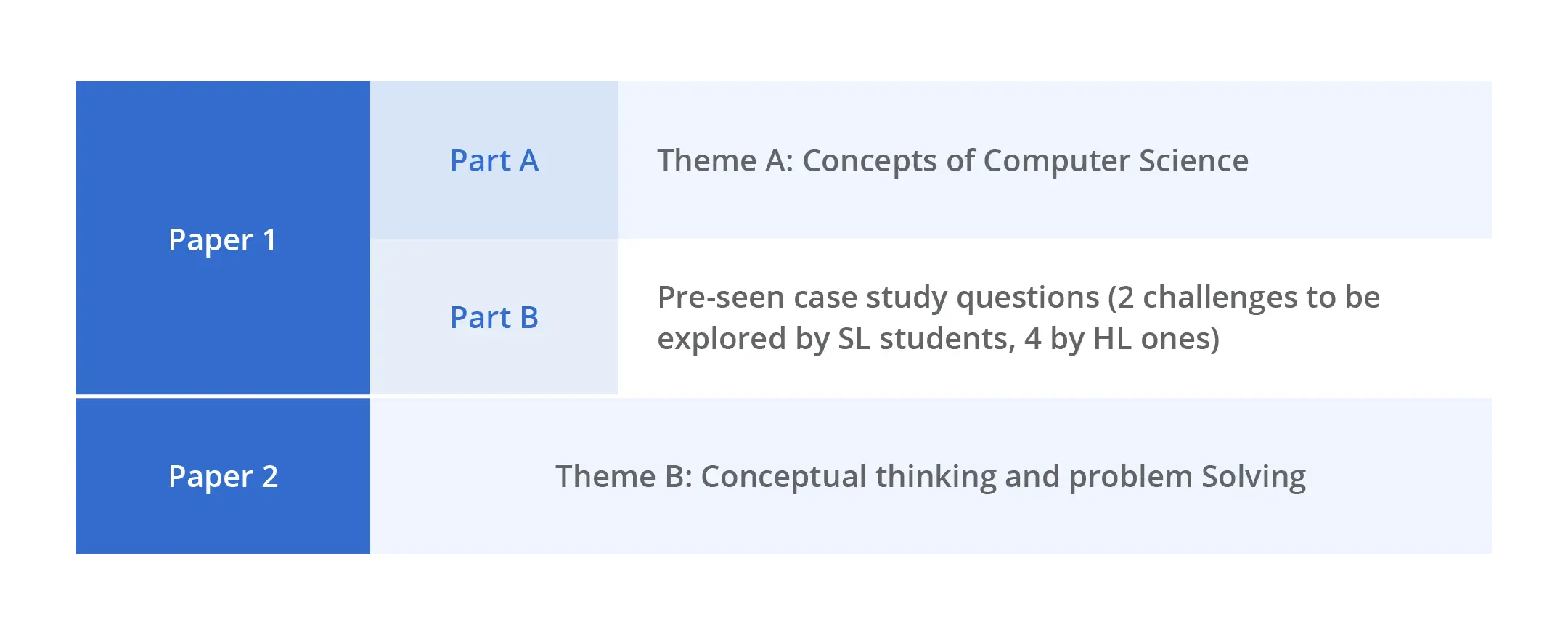
| Paper 1 |
Part A Part B |
| Paper 2 | Theme B: Conceptual thinking and problem Solving |
Internal Assessment
The internal assessment continues to be structured around five criteria.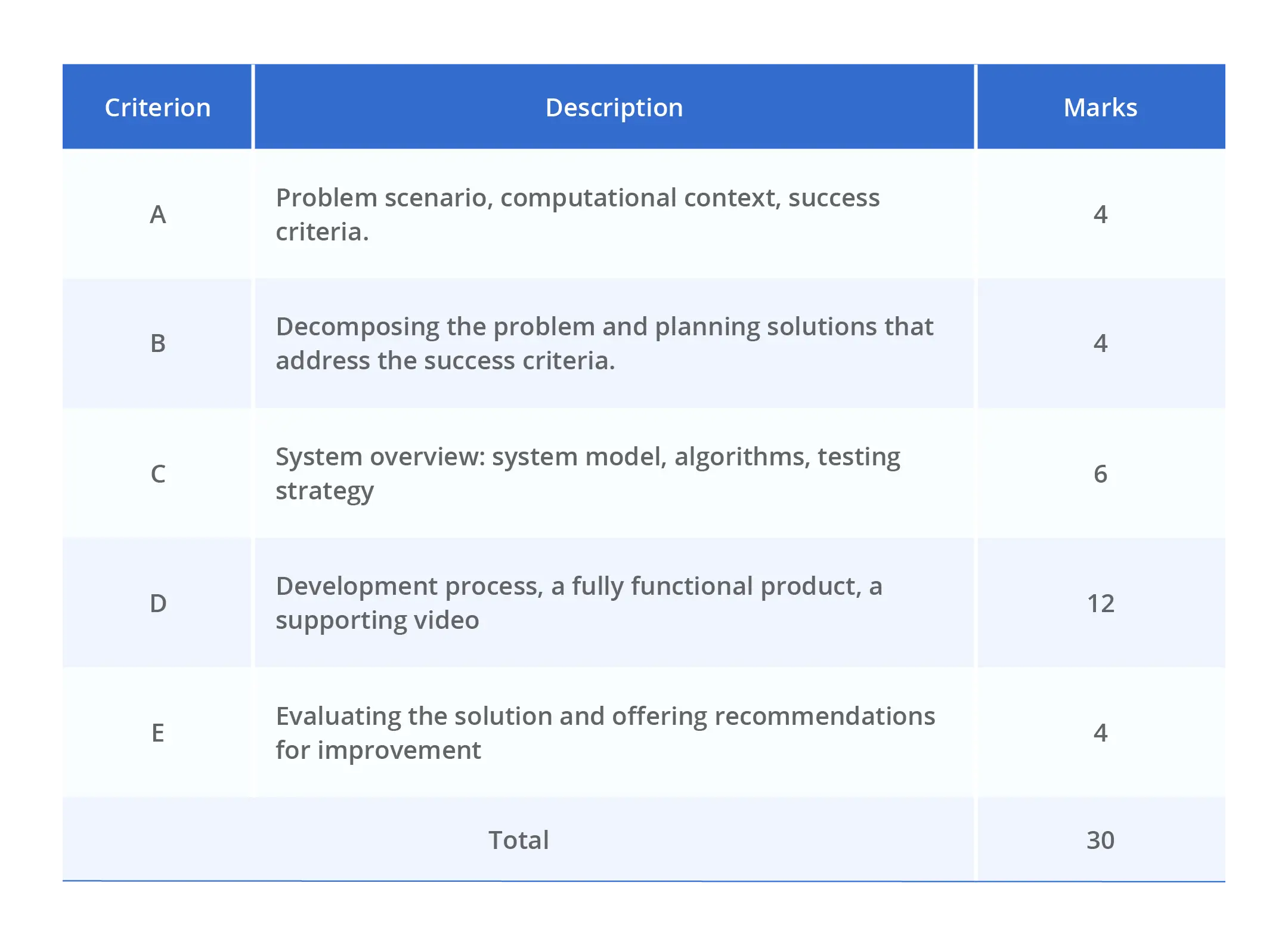
| Criterion | Description | Marks |
|---|---|---|
| A | Problem scenario, computational context, success criteria. | 4 |
| B | Decomposing the problem and planning solutions that address the success criteria. | 4 |
| C | System overview: system model, algorithms, testing strategy | 6 |
| D | Development process, a fully functional product, a supporting video | 12 |
| E | Evaluating the solution and offering recommendations for improvement | 4 |
| Total | 30 |
Internal Assessment observed changes:
Client requirements There is no longer a requirement to involve a client, giving candidates the freedom to explore any topic that interests them. Video Duration: maximum 5 minutes The video should clearly demonstrate the functionality of the product, as well as provide examples of the testing strategy used. Documentation The written documentation must be submitted as a single document. Appendices All appendices, including the full source code and any student-developed resources referenced in the documentation—should be compiled into a separate PDF file. Word count The total word count remains capped at 2,000 words. Time allocated The Internal Assessment is now allocated 35 hours. Exam weight The internal assessment contributes 30% to the final grade at SL and 20% at HL. That sounds exciting! I'm sure your exploration of these new concepts will be both rewarding and engaging. I hope you and your students have a great time discovering all the learning opportunities the new curriculum offers! To further support teachers preparation for the new course, ManageBac is preparing two webinars:- a collaborative webinar session that presents the main changes in the guide and allows time for discussion and sharing of resources.
- a collaborative webinar session that focuses on the Internal Assessment changes.
Join me in our upcoming free webinar as I explore the updates in the Computer Science Guide and their effects on teaching and learning.

What’s New in the IB DP Computer Science Guide for 2027: Essential Updates & Expert Insights
Register NowThe Learning Management Digest
Subscribe today to receive our latest resources, events, updates and so much more – specially curated for you, and delivered straight to your inbox.

